PRESTO PLANS
Sent straight to your inbox
CLICK HERE TO ACCESS
Sign up to receive 10 ready-to-use ELA resources your students will love!
10 FREE ELA RESOURCES
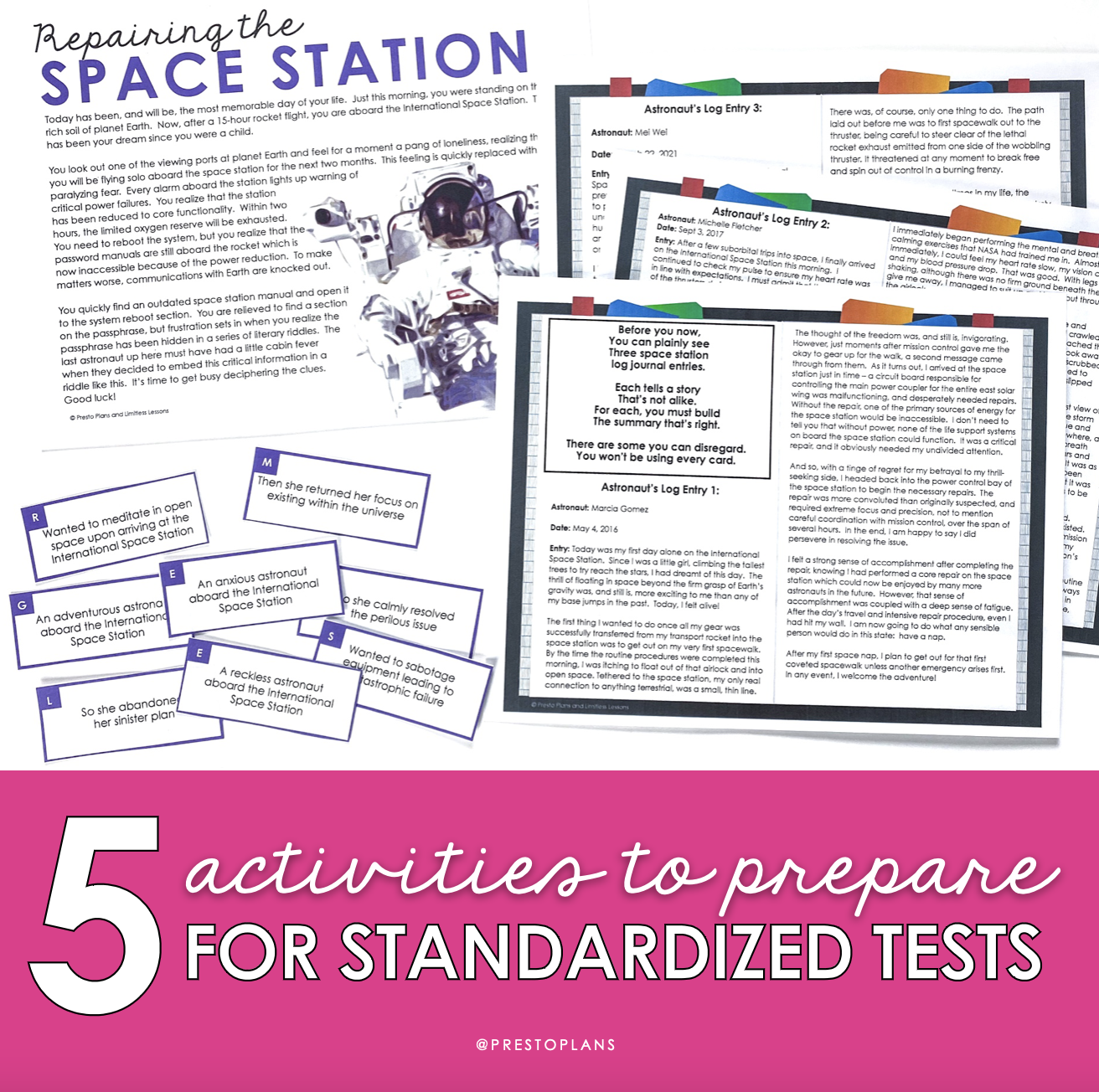
5 Fun Activities to Prepare Students for Standardized Tests
At this time of year, you might be wondering how best to prepare students for standardized tests without sacrificing engagement, creativity, or fun in middle and high school ELA. Let’s face it – review activities have a reputation for being dry. Getting students ready for standardized tests can feel daunting, especially at an already busy and stressful time of year.
I believe that review activities don’t need to be dull to be effective. In fact, I think that when students can work collaboratively on meaningful, high-interest review tasks, the learning will “stick” long after the test is over! Here are my best tips and tricks to help prepare students for standardized testing, one skill at a time!
1. Inference Skills
I find that inference skills are an area where middle and high schoolers tend to struggle. Many standardized tests require students to apply skills of inferential thinking, so this is an area you may want to focus on as you prepare students for their exams.
One engaging type of activity you might want to try is reading mysteries, which require students to “read between the lines” of the provided information to draw conclusions about a highly engaging mystery. I love reading mysteries because they encourage students to work collaboratively, examine all different types of texts (including emails, text messages, newspaper articles, social media posts, posters and flyers, brochures, and many more!), and justify their conclusions with specific evidence and examples.
Each of the no-prep activities in my Reading Mysteries Program has everything you need to help students practice their inference skills. You can try one for FREE by clicking the image below!
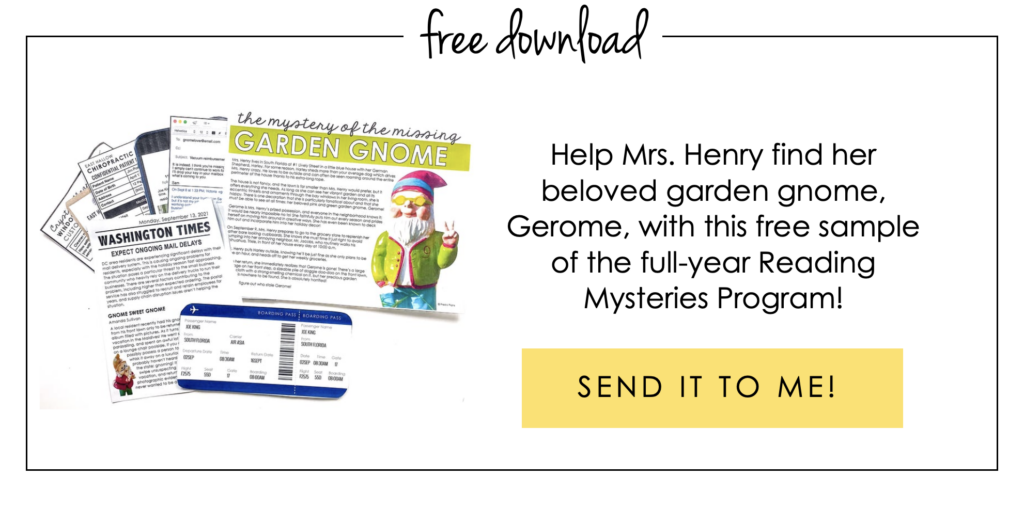
I like to begin all reading mysteries by first introducing the mystery using the provided slides. From here, I divide students into groups and provide them with a package of evidence to help them consider as they work to solve the mystery. Next, students comb through the evidence, identifying specific details that might confirm or rule out various suspects. Finally, they need to draw a conclusion and share it with the class, supporting their reasoning with text-based evidence.
I cover more of my favorite inference activities over on the Secondary English Coffeeshop: 8 Activities to Build Inference Skills.
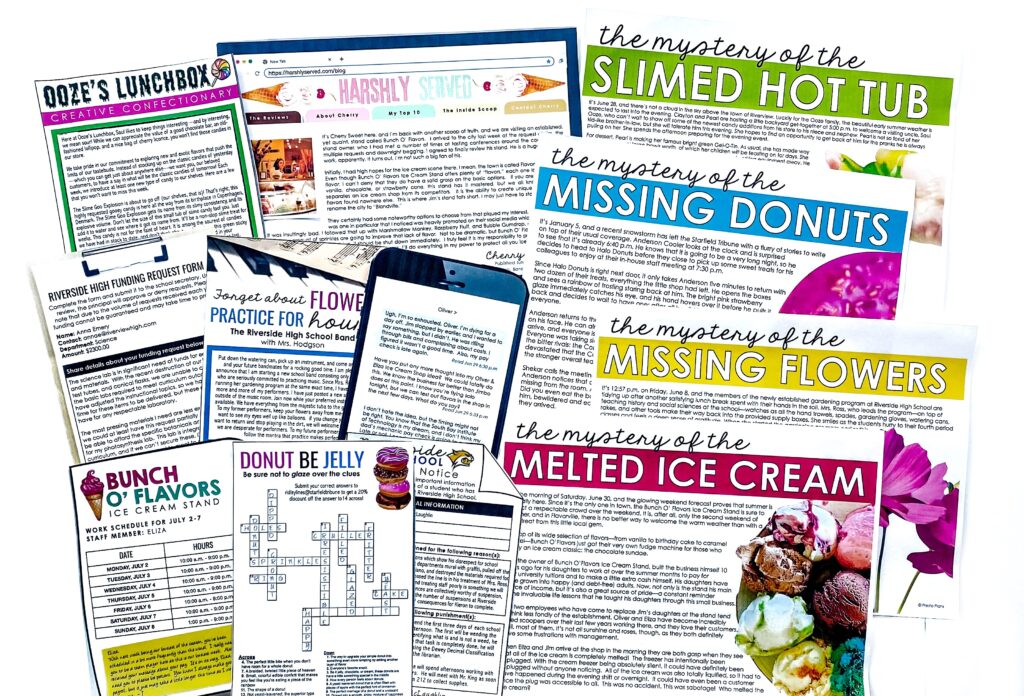
2. Text Evidence
One skill you likely want to work on as you help students prepare for standardized tests is finding text evidence. Text evidence can be tricky (and dry!) to review through direct instruction, which is why I really love using immersive activities to help students get hands-on practice with this skill. Text Evidence reading challenges, for example, allow students to work through the process of finding text evidence in an intentional and collaborative way.
In the Text Evidence Reading Challenge, students first read background information that sets the scene for the task ahead. As jungle explorers in southern Mexico, students imagine they are suddenly forced off their planned route by a ferocious jaguar! As they flee, they stumble upon a mysterious journal, packed with papers, a poem, and prompts to lead students on a “hunt” for text evidence. If they successfully complete the challenge, they should be able to discover a hidden six-digit PIN to activate a gondola, which will return them safely to their camp.
In this no-prep learning task, students work in groups to review a written journal passage, carefully combing through each sentence to identify evidence to support a series of provided statements. Once they have completed their task, you can use the provided slides to help them review and check their work!
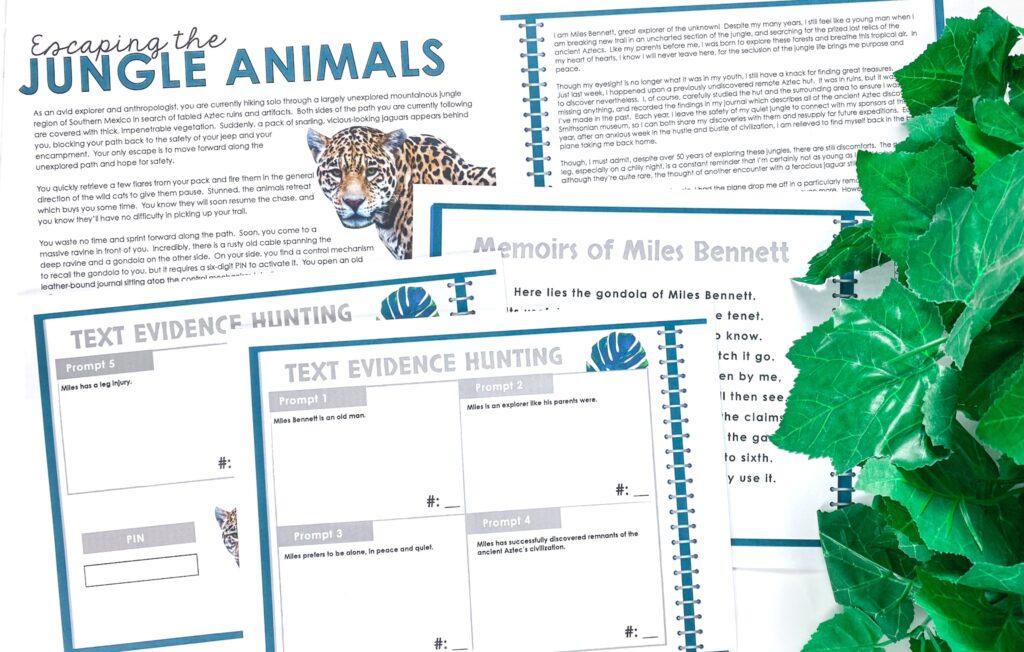
3. Summarizing
Another skill that students need to master as they prepare for standardized testing is summarizing a text. I like to use activities like the Summarizing Reading Challenge to help students determine how to filter out non-essential details when summarizing fiction. As they work through the task, they learn how to focus their attention only on the most important plot details.
I like to begin by reviewing four basic story elements: setting, characters, conflict, and resolution. From here, it’s time to focus more specifically on summarizing fiction. One trick I share with students is that if they can identify the conflict the character is facing, and how it is resolved, this is usually the foundation of an effective summary.
From here, it’s time to introduce the challenge! In this task, students imagine they are onboard the International Space Station when there is a sudden oxygen failure! They will only be able to escape certain death by solving a series of literary riddles, which hold the key to rebooting the airflow system. Using the Someone/Wanted/But/So/Then summarizing technique, students will work through provided text samples to unveil a mystery passcode!
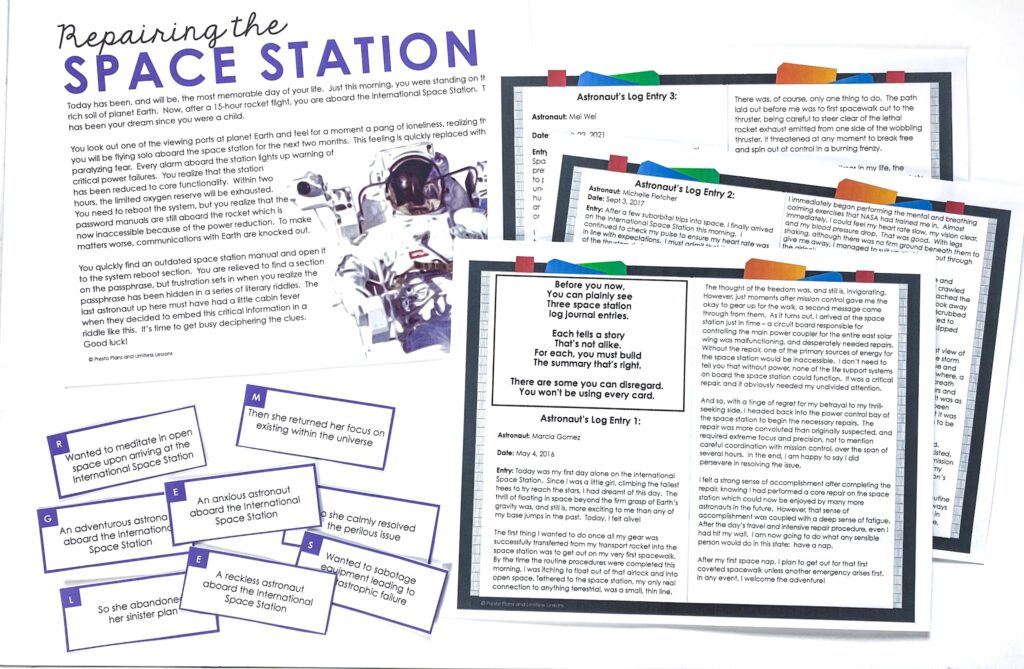
4. Figurative Language
I find that figurative language terms can be especially tricky for middle and high school ELA students – especially when they need to remember them under the pressure of a standardized test! Regular review is, I think, the key to making these concepts “stick” – and my very favorite way to revisit figurative language terms is through an interactive escape room!
Although it needs a bit of minor preparation, the Figurative Language Escape Room learning task is well worth it! In this engaging and competitive task, students race to apply their understanding of figurative language at a series of stations placed around the classroom. Before students arrive, you’ll want to be sure to set up your stations, making sure they are labeled, and that all necessary materials, like task cards, are ready to go!
You will also need to photocopy enough response booklets for your class – you may choose to have each student complete an individual booklet or have teams of students record their answers together. Finally, a poster on the classroom door can help to build anticipation for the activity!
Once students arrive, they’ll race to complete various tasks to crack the secret code! As they work, they’ll have the opportunity to apply their understanding of the following figurative language terms:
- Metaphor
- Simile
- Alliteration
- Personification
- Onomatopoeia
- Oxymoron
- Pun
- Allusion
- Idiom
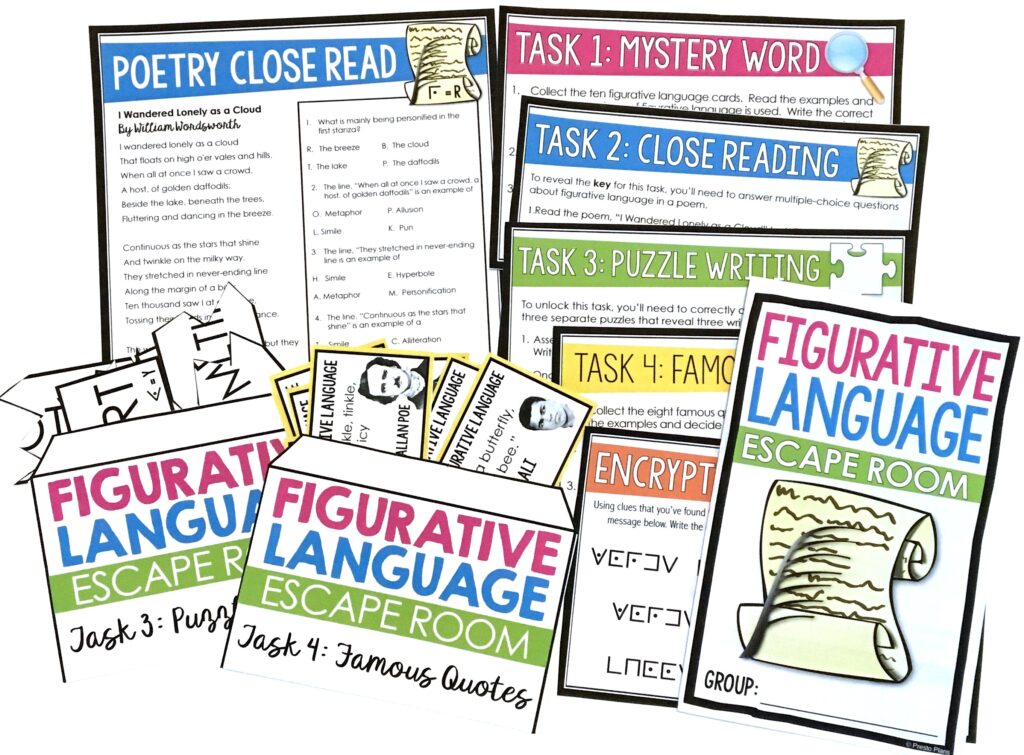
5. Vocabulary
As you prepare your middle and high school ELA students for standardized tests, vocabulary is another area you likely want to focus on. Students are often required to determine the meaning of unfamiliar vocabulary terms using context clues. This can be a challenging task, but there are plenty of fun, rigorous, and engaging ways to review this skill!
Reading Challenges focused on vocabulary can be an interactive, high-interest way for students to practice vocabulary skills. In Escape the Egyptian Library (available for FREE below), students imagine they are trapped in a library – and escape can only be found by completing a series of vocabulary-related tasks. As students work through the challenge, they will also brush up on their ability to determine the meaning of various words in context.
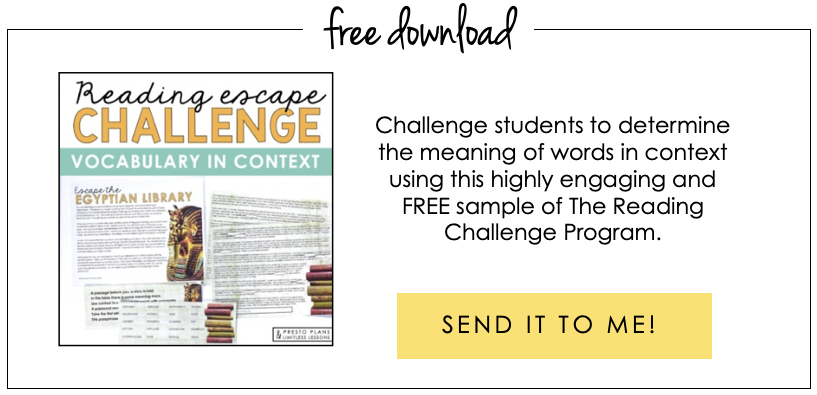
If your vocabulary focus is on connotation, another escape-room challenge to try is the Search for the Genie’s Lamp! In this high-interest task, students review various connotations of words – positive, negative, and neutral. Then, they apply their understanding through a series of structured puzzles and activities! Once they’ve cracked the code, you can review their final answers – and maybe even award prizes to the winners!
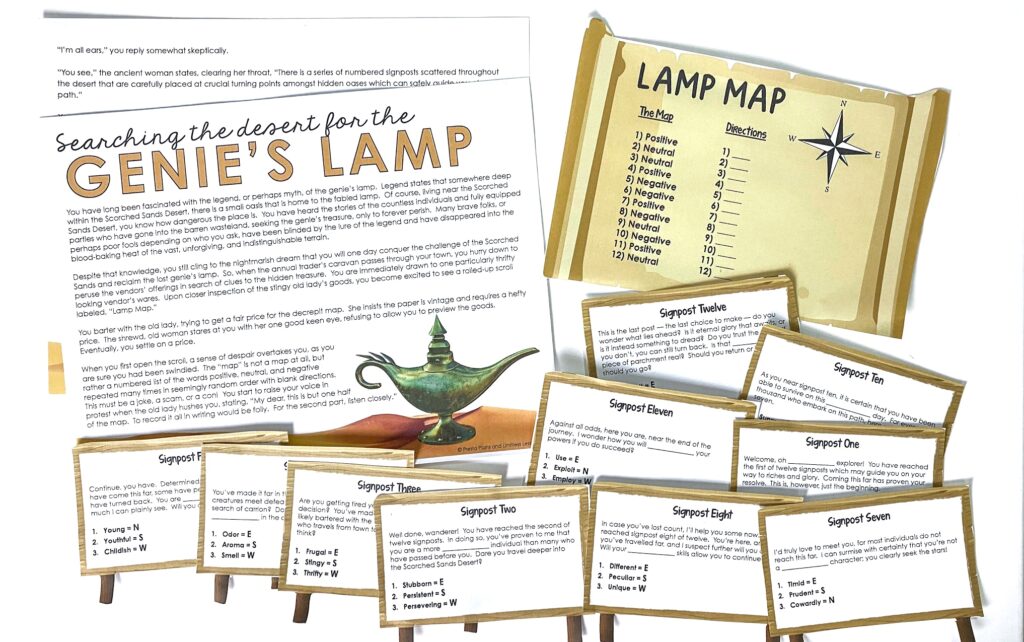
BONUS: Nonfiction Skills
While most of the strategies and reviews in this post have focused on reading skills related to fiction, many standardized tests also focus on nonfiction literacy skills. If you’re looking for lessons, activities, and other engaging learning tasks centered around informational text standards, check out the Presto Plans Nonfiction Program! It comes with 40 no-prep lessons and activities (one for every week of the school year!) to support students with a range of transferrable literacy skills, explored through the lens of nonfiction texts. Try the one pictured below for FREE by clicking here.

There you have it! I hope you find these activities can help you prepare students for standardized tests in a fun and engaging way! Finally, feel free to click the images below to learn more about a few of the programs mentioned in the post:





Search the blog for what you are teaching
GIVEAWAYS
sent straight to your inbox!
share this post